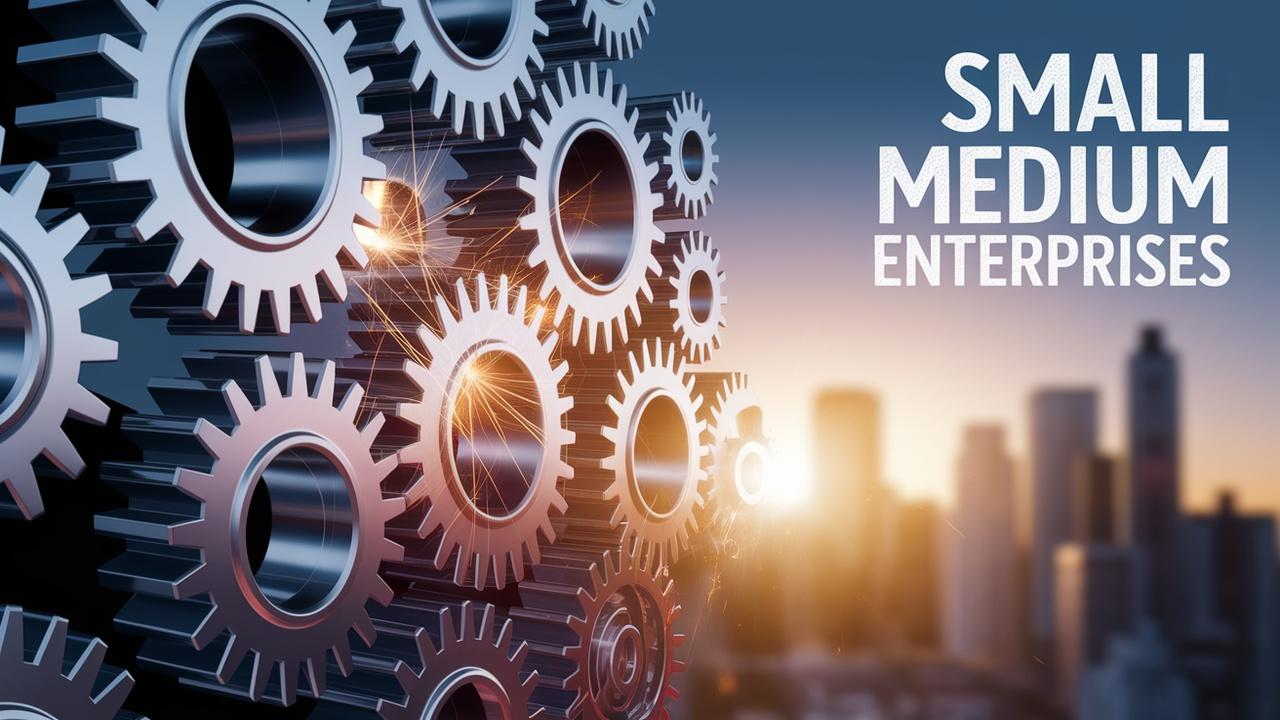MSME Full Form-Micro-Small-and Medium Enterprises
by Shashi Gaherwar
0 1019
Introduction
Micro, Small, and Medium Enterprises (MSMEs) play a crucial role in fostering economic growth, innovation, and employment generation. These businesses are often referred to as the backbone of an economy, as they contribute significantly to GDP, exports, and industrialization. This article explores the importance of MSMEs, their classification, benefits, challenges, and government policies aimed at supporting their development.

What are Micro, Small, and Medium Enterprises (MSMEs)?
MSMEs are classified based on investment in plant and machinery or annual turnover. Different countries have their definitions, but a common standard is:
Classification of MSMEs (India)
As per the MSME Act, 2006, and subsequent updates:
• Micro Enterprises – Investment up to ₹1 crore, turnover up to ₹5 crore.
• Small Enterprises – Investment up to ₹10 crore, turnover up to ₹50 crore.
• Medium Enterprises – Investment up to ₹50 crore, turnover up to ₹250 crore.
These enterprises operate in manufacturing, services, and trade, catering to both local and global markets.
The Importance of MSMEs in Economic Development
1. Employment Generation
MSMEs are one of the largest job providers, especially in developing economies. They create employment opportunities in both rural and urban areas, reducing dependency on agriculture and large industries.
2. Contribution to GDP
MSMEs significantly contribute to national GDP. In India, MSMEs account for about 30% of GDP, while in other emerging economies, their contribution can range between 25% to 40%.
3. Encouraging Entrepreneurship
By lowering barriers to entry, MSMEs promote entrepreneurship and self-reliance. They provide a platform for innovation and creativity, allowing small businesses to grow into large enterprises over time.
4. Enhancing Industrial and Regional Development
MSMEs help decentralize industrial growth, ensuring economic activities are spread across different regions. This promotes rural and semi-urban development, reducing migration to urban centers.
5. Boosting Exports and Foreign Exchange Earnings
Many MSMEs are involved in export-oriented businesses, contributing to foreign exchange earnings. Handicrafts, textiles, and engineering goods are some of the major export segments for MSMEs.
Challenges Faced by MSMEs
Despite their significant role, MSMEs encounter several challenges that hinder their growth:
1. Lack of Access to Finance
• Many MSMEs struggle to obtain loans due to stringent banking regulations and lack of collateral.
• High interest rates on loans discourage small businesses from borrowing for expansion.
2. Limited Market Reach
• MSMEs often lack the infrastructure and digital presence required to reach wider markets.
• Dependence on local buyers restricts growth potential.
3. Regulatory and Compliance Burden
• Compliance with tax laws, labor laws, and business regulations can be complex and costly.
• Frequent policy changes create uncertainty for small businesses.
4. Technology and Skill Gaps
• Many MSMEs operate with outdated technology and lack access to automation.
• Insufficient technical skills among employees hinder productivity and competitiveness.
5. Infrastructure and Logistics Issues
• Poor transportation networks and lack of warehousing facilities increase operational costs.
• Energy shortages and unreliable power supply affect manufacturing efficiency.
Government Policies and Support for MSMEs
Recognizing the role of MSMEs in economic growth, governments worldwide have implemented policies to support their development.
1. Financial Assistance Programs
• India: Credit Guarantee Fund Scheme for MSMEs (CGTMSE) provides collateral-free loans.
• USA: Small Business Administration (SBA) Loans offer financial aid to small enterprises.
• EU: The European Investment Fund (EIF) supports MSMEs with capital investments.
2. Digitalization and Technology Support
• Governments promote digital payments and e-commerce platforms to expand market reach.
• Technology incubation centers help MSMEs adopt modern business practices.
3. Skill Development and Training
• India’s Skill India Mission trains entrepreneurs and workers in business management.
• Vocational training programs provide industry-specific skills for MSME workers.
4. Ease of Doing Business Initiatives
• Simplified business registration and tax procedures reduce the compliance burden.
• Single-window clearance systems speed up approvals for small businesses.
5. Export Promotion and Market Access
• Governments offer subsidies and incentives for MSMEs involved in export activities.
• Trade fairs, international collaborations, and online marketplaces help MSMEs expand their customer base.
Future Trends and Opportunities for MSMEs
1. Integration of Digital Platforms
• Adoption of e-commerce, fintech, and cloud-based solutions will drive MSME growth.
• Digital marketing and online sales channels offer new revenue opportunities.
2. Sustainability and Green Business Models
• Governments encourage MSMEs to adopt eco-friendly production processes.
• Sustainable packaging, waste management, and renewable energy integration will be key trends.
3. Globalization and Export Expansion
• Free trade agreements (FTAs) and global supply chain integration will boost MSME exports.
• International collaborations and technology sharing will enhance competitiveness.
4. Rise of Women Entrepreneurs in MSMEs
• Special financial schemes for women-led businesses are gaining traction.
• Women’s participation in MSMEs is expected to increase significantly.
Micro, Small, and Medium Enterprises are vital to economic growth, employment generation, and regional development. While they face multiple challenges, supportive government policies, financial aid, and digital transformation are driving their expansion. As MSMEs continue to innovate and adapt to new market trends, they will remain key drivers of sustainable and inclusive economic progress.
With the right support and resources, MSMEs can achieve their full potential, contributing to a stronger and more resilient global economy.

Share:








Comments
Waiting for your comments